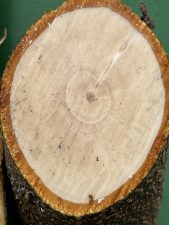
Functionality and Vitality of Pecan Tree Organs: Stems
My grandfather, Ernest “Tug” Nesbitt, lost the tip of one finger in a shop accident working with a table saw. It was a minor injury, one that only slightly disfigured his fingertip, but nonetheless, it was something that he lived with for the rest of his life. Many people have endured the absence or loss...
Read more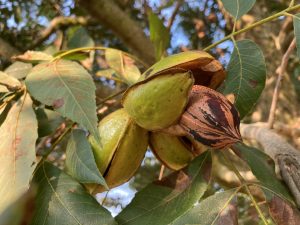
Functionality & Vitality of Pecan Tree Organs: The Fruit
The first human-to-human heart transplant was performed by Dr. Christiaan Barnard at Groote Schuur Hospital, Cape Town, South Africa, in December of 1967. The heart recipient lived a brief eighteen days after that operation. Still, the procedure laid the foundation for critical human organ transplant surgery to become a viable practice for saving lives. According...
Read more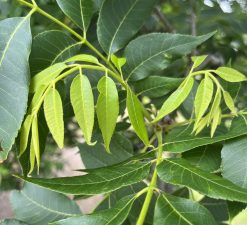
Functionality and Vitality of Pecan Leaves
I came home recently to find my seventeen-year-old son, Collin, working on his 11th-grade medical terminology class project. His assignment was to depict the major internal organs of the human body on a poster using candy or other snack foods. Human internal organs, shown here with LifeSavers, jelly beans, marshmallows, Rice Krispie Treats, and licorice...
Read more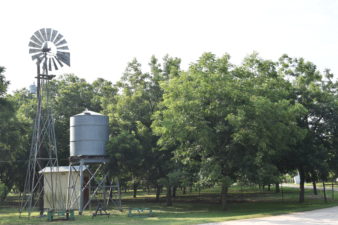
Texas Growers Get Opportunity to Set Priorities
Texas Pecan Growers Association received a 2022 Specialty Crop Block Grant to critically assess the Texas pecan industry’s economic development and sustainability through a series of survey-based projects. According to the USDA Census of Agriculture, pecan acreage in Texas declined 17.5% from 1997 to 2017, when acreage increased 7% nationally. Uncovering the factors behind this...
Read more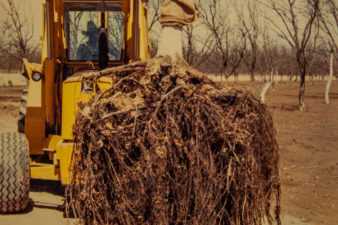
Functionality and Vitality of Pecan Tree Organs
I’m an organ donor; at least, I’ve signed up to be one if the “opportunity” arises. As many generous and well-intending people have done either at the time of their death or, in some cases, while still living, I am one of approximately 165 million people in the United States today who is willing to...
Read more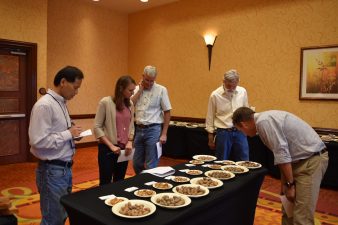
In Search of Texas’ Best Pecans
Being the best at something isn’t taken lightly in Texas. High school football and marching bands. Barbeque and Tex-Mex food.e Youth rodeos and livestock shows. Trophy bucks and large-mouth bass. Beauty pageants and cheer competitions. From the Texas State Fair to the small town festivals around the state, everything from homemade quilts to classic cars...
Read more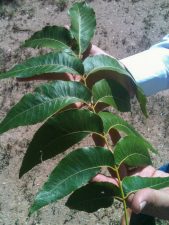
Abundant and healthy leaves, the key to high-quality pecans
Each year our state pecan show contains examples of Texas-grown pecans attaining outstanding quality. The grand champion native pecan from 2021, judged at the most recent TPGA conference, was entered by the late Chester McCown of Runnels County, and it weighed 49 nuts per pound and was 48% kernel—exceptional for a native pecan. The grand...
Read more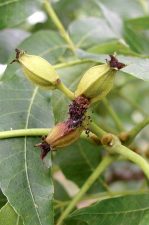
Raise your pecan nut casebearer game
My first job in the field of horticulture was selling plants, fertilizer, seeds, and lawn and garden supplies at a retail garden center in Lubbock, Texas, in 1985. Retail sales in the springtime boomed from the customer interest in the beautification of West Texas landscapes. I sold many bottles and bags containing diazinon, malathion, carbaryl...
Read more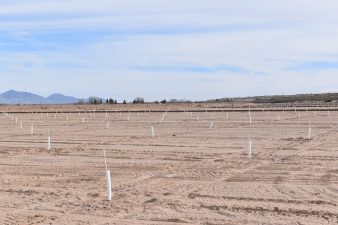
Take years off orchard development with these 5 facets of pecan culture
The elephant in the room for anyone deciding whether to start a pecan orchard is the lengthy non-productive development phase in the beginning. Ownership must have the financial capability to start and care for a new pecan orchard enterprise for a period of four to eight years with no crop. I present this wide four-year...
Read moreIt’s about time (and pecans)
Time is money. Time flies. Time waits for no one. Time changes everything. Time is running out. Popular sayings about time are abundant because we talk about time a lot. We talk about time a lot because we frequently have one eye on time as we go about life. One year ago, my own time...
Read more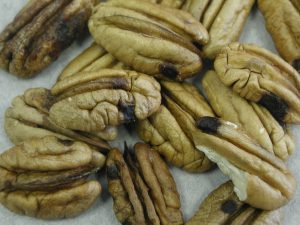
Don’t trip near the finish line
The Olympic Games come into our lives every four years, bringing stories of triumph and heartbreak. I’m always impressed with the dedication of talented athletes who set aside living a normal life, sacrificing socially and financially for the chance to win a medal and have their names etched in history’s record books. While some achieve...
Read more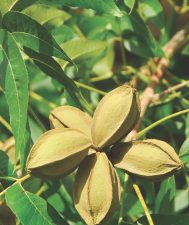
Market timing your pecan production? A questionable decision.
The career of a Wall Street stockbroker is no doubt fast-paced and high stress. Constantly deciding “Should I buy or sell?” or “Is the market heading for a crash or a boon?” must undoubtedly translate into hard days and long, sleepless nights. I had a brief flirtation with buying and selling stocks during the Dot-Com...
Read more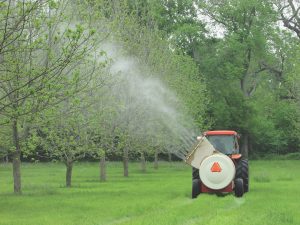
Make the most of your airblast sprayer, your most valuable orchard asset
For anyone attempting to grow pecans for profit, the only essential piece of equipment for accomplishing that task is an airblast sprayer. Well, you also need a tractor to pull it through the orchard and power the pump on PTO-type machines, so that’s really two essential pieces of equipment. Every other piece of equipment used...
Read moreNitrogen in Pecans Versus Other Crops
Nitrogen (N) is the essential plant nutrient of greatest concern in most commercial plant production systems, including pecan. Although nitrogen may be present in irrigation water or resident in soils from ongoing organic matter decomposition, supplemental nitrogen fertilizer is typically required in field and orchard crops every year. Conversion of nitrogen to plant-usable forms (nitrate,...
Read more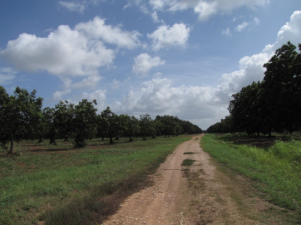
Before You Plant, Evaluate Your Soil
Each January, people throughout the southern United States prepare to plant a new pecan orchard. For many, it’s a first-time venture, perhaps even their first agricultural endeavor. Others may be expanding or renovating an existing orchard by planting trees on new ground or within their present boundaries. Some people may be planting ten trees, while...
Read morePostharvest Management Matters
Harvest is a dividing line for two important phases of pecan production. The “preharvest” phase involves everything that goes into setting, growing and protecting a pecan crop while it is on the tree. We generally count all of the 200 plus days from budbreak to shucksplit as the pre-harvest period, but it includes the care...
Read more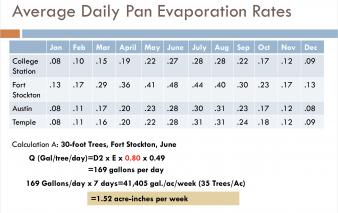
Water Needs of Pecan Trees: Revisiting McFarland & Worthington’s Lysimeters
Water is life to a pecan tree. Water mediates photosynthesis and the production of carbohydrates vital for growth and the development of leaves, limbs and nuts. Water transports and distributes many plant nutrients throughout the tree that are harvested by its roots. And transpiring off the surface of pecan tree leaves, water acts as an...
Read more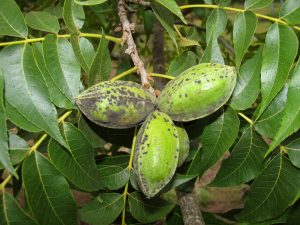
5 Costly Scab Control Mistakes & Some Possible Fixes
The USDA issues a final pecan crop report annually at the end of June or beginning of July, providing the industry a retrospective picture of the previous year’s pecan production across the pecan belt. Missing from this official documentation is any tabulation of crop loss. An unknown tonnage of pecans in each state fail to...
Read more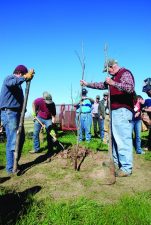
A 53-Year-Old Tradition Continues in January with the Texas Pecan Short Course
The Texas Pecan Short Course has a history that dates back to 1965 when it started as a week-long class for county extension agents who needed to gain practical training on pecan culture, grafting, pruning, fertilizer, and pest management. Originally taught by the late Professor Emeritus J. Benton Storey, the training had small beginnings with...
Read more
The Showstoppers: High-Quality Pecan Cultivars from the Texas Pecan Show
Pecan shows are a time-honored November-December tradition in Texas. Although rudimentary pecan shows were held in the early decades of the 1900s, the Texas Pecan Growers Association hosted the first official Texas Pecan Show in 1950. County Extension offices began holding local shows in 1953. The TPGA and Extension shows merged in the late 1950s,...
Read moreFour Important Tips for Managing Your Orchard Floor This Fall
September brings about harvest anticipation and preparation for pecan growers in the Southeast. Lots of attention is rightfully paid to what is happening up in the tree canopies. Aphids and mites are still a threat to balloon out of control. It is a big month for stinkbugs. Hickory shuckworm can inflict economic injury in the...
Read moreWhy Mulching Matters
In 1994, I was interviewing for a job with Auburn University and was being toured through the E.V. Smith Research Center near Shorter, Alabama, by Bill Goff, Professor in the Department of Horticulture. Dr. Goff was giving me an overview of active research projects on pecans at this central Alabama Agricultural Experiment Station-owned research center....
Read more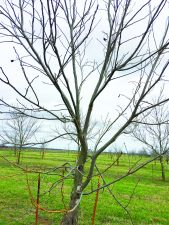
Pecan Tree Training Tips
Thousands of young pecan trees have been planted in the southeastern U.S. this winter, and they are primed to break dormancy and grow in the coming days. Few, if any, newly grafted pecan trees grow into a nice, central leader-shaped tree on their own. Without some efforts at training them, all these thousands of new...
Read morePecan Tree Stress
The 2016 pecan harvest did not end positively for many growers in Texas — especially it seems in the eastern region of the state. In a year of favorable market prices, growers were frustrated to not be able to deliver top quality and receive top prices. Incomplete kernel filling was realized in some orchards. Dark...
Read more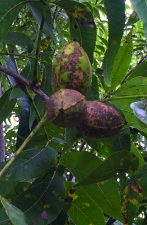
Scab Resistance Update
Spring precipitation amounts in 2015 and 2016 have been truly impactful on agriculture in Texas, replenishing lakes and reservoirs, recharging deep soil strata with water and bringing discussions of historical droughts to at least a temporary halt. The 2016 pecan crop bears marks of these El Nino-influenced rains in many areas of Texas. The marks...
Read moreTo Feed or Not to Feed — Foliar Fertilizers
The water-soluble fertilizer industry is alive and well. Unverified sources place the annual gross sales of water-soluble fertilizers around the world at $12.2 billion dollars, involving over 13 million tons of products used worldwide each year. Water-soluble fertilizers may be used in injection systems in greenhouses, nurseries, orchards, livestock feeding systems, and row crop production...
Read more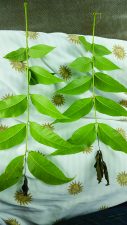
Dormant-Season Disease Prevention
Southeastern pecan growers today are living in the good times when it comes to disease control. A large number of low-toxicity fungicides are available in easy-to-handle packages. Large capacity air-blast sprayers are pulled behind tractors fitted with air-conditioned cabs. Some growers even have cameras on the sprayer wired to monitors on the dashboard that display...
Read moreThe Glyphosate Debate
Glyphosate herbicide is arguably the most important synthetic chemical product in the history of the pecan industry. For 40 years it has helped growers effectively combat a wide spectrum of annual and perennial weeds. It was instrumental to the development of the ‘sod and strip’ system of orchard floor management, reducing disking and mowing practices...
Read more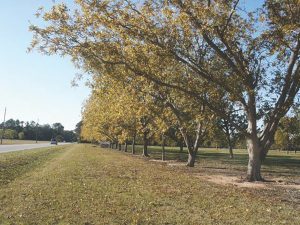
In Search of Fall Color
Thousands of Americans head out on the highways and byways of the country each year in search of fall color. Many southerners journey north where the cooler temperatures bring out the vivid red, bronze and gold foliage color hues that can be elusive or short-lived in the South. Technology, the internet and social media now...
Read more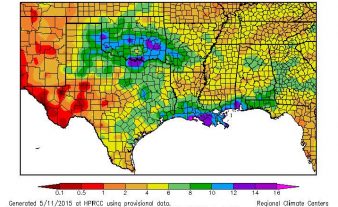
Summer Pecan Scab Defense
The start of the 2015 growing has been wetter than normal for many pecan growers in portions of Oklahoma, Central and Eastern Texas, the Central Gulf Coast and middle Georgia (Fig 1.). The National Weather Service has declared that El Nino is present, with a 70 percent chance of continuing through this summer and 60...
Read more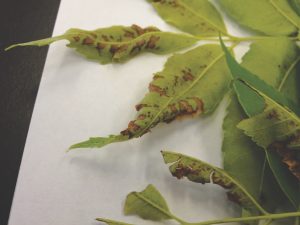
Zinc Thinking in the Southeast
Zinc is the 24th most abundant element in the earth’s crust, the eighth metal known to man, a component of ancient brass artifacts, and an ingredient of batteries, gutters and galvanized screws. Zinc is a relative newcomer to plant fertilizer, having not been discovered as essential to plant growth until 1926. Not long afterward, zinc...
Read more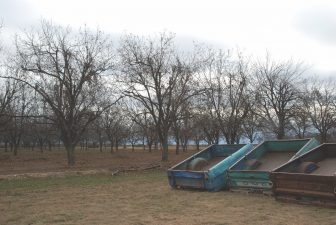
The Best Pecan in Texas in 2013
Being the best at something is commendable in Texas, where there is no shortage of biggest, best, brightest and firsts. The “best” pecans in Texas for each crop year are awarded in July at the Texas Pecan Growers Association Annual Conference. The journey to being the best begins with entering a 42-nut sample in a...
Read more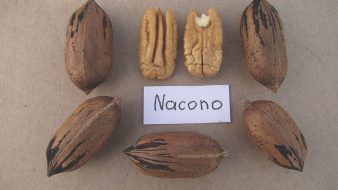
Pecan Variety Identification
Many situations arise that call for identifying a pecan tree and variety. Orchards are bought or inherited, sometimes with no map or planting plan of what was planted. People identify exceptional trees that they want to identify or name. Growers with a young orchard may discover trees producing nuts different from what they bought. Buyers...
Read more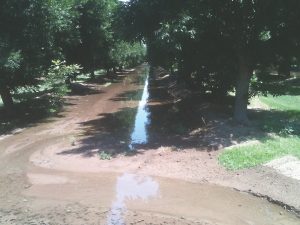
Avoid late-season flooding
The pecan scientific community has collectively and rightfully stressed the importance of late-season irrigation. Larry Stein, Jody Worthington, George Ray McEachern in Texas and scientists in other states contributed to our modern understanding of the necessity of late-season irrigation to improve pecan kernel quality and reduce stress disorders like shuck decline and stick-tights. Darrell Spark’s...
Read moreCasting Shadows
Pecan trees grow every year according to their overall health and growing environment. The gains in the growth of young trees that are one to five or six years old are usually quite obvious, with branches sometimes adding two or more feet of length in one growing season. They add height to their central leader...
Read more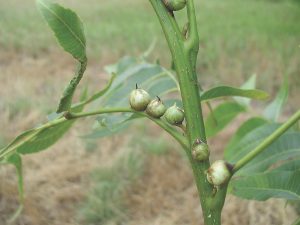
Ready, Set, Budbreak
In a National Football League game, the quarterback of the team on offense has 40 seconds from the end of the previous play to get the next play from the coach, gather his teammates in a huddle, tell them the next play, walk up into formation, glance at the opposing team’s defense, and bark out...
Read moreA Pecan Orchard Christmas List
Many of us likely remember writing a letter to Santa Claus in the days of our youth — a checklist of the things we most wanted to find wrapped up with a bow on Christmas morning. Small town newspapers often publish Christmas lists that elementary school-aged children send in. It’s always fun to see the...
Read more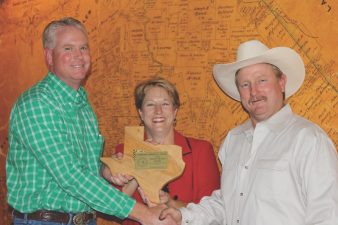
Top Pecans in Texas – 2012
Winners of the Texas State Pecan Show were selected last July at the Texas Pecan Growers Association annual convention held in College Station. Approximately 21 county pecan shows were held across the state during the months of November and December 2012, some of which were multi-county events. The top 2 placing entries within each variety...
Read more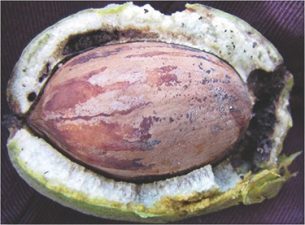
Wanted: High Quality Pecans (Part 2 of 2)
Placing a premium on growing high-quality pecans is not new. Organized pecan shows have been held in Texas since before 1950, and the objective of these shows was and is to showcase both large and very high-quality pecans. As our industry promotes pecans to new consumers around the world and educates them on the health...
Read more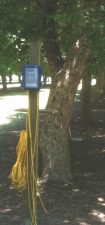
Wanted: High-Quality Pecans (Part 1 of 2)
A message delivered to pecan growers throughout the pecan belt in 2012 and 2013 is the pecan market, domestic and foreign alike, wants high-quality pecans. Millions of pounds of pecans grown in 2012 were either left in the field or remain stockpiled in barns, sheds or cold storage today, because they had quality problems and...
Read more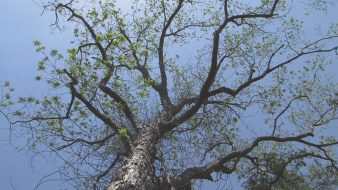
Early season fungicides – a sound investment
One of the facts of growing pecans in the Southeast is disease prevention. Sure, there are “dry spells” and even dry years when the pressure and concern of fending off a scab infection are less challenging, but from East Texas to Florida and all points in between, those are generally rare. Pop-up showers and thunderstorms...
Read more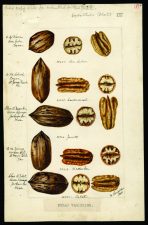
Pecan varieties for collectors
Let’s take a break from the usual routine of presenting information on pecan varieties that growers should considering planting for their scab resistance, consistent production, or potential profitability, and instead review pecan varieties to plant just because they make for great conversation. As a warning, let me preface this article by saying: Do not plant...
Read more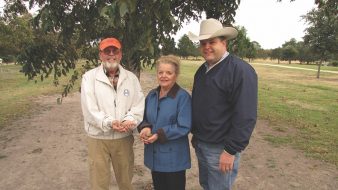
Winning Texas Pecan Show for 2011 no easy task
The year 2011 will be stamped in history books as one of the worst drought years in Texas. “Difficult” doesn’t begin to describe the growing conditions that pecan growers throughout the Lone Star state struggled with, taxing their irrigation systems just to keep trees alive. The combination of drought, scarce production over most of the...
Read more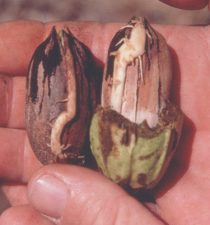
Future pecan trees available now
Obtaining pecan trees to plant in 2013 is a real challenge. If you haven’t contracted with a pecan nursery prior to the appearance of this article, you will likely sit on the sidelines during the upcoming winter tree-planting season. More trees are on the way. Nurseries, both established and new enterprises, from Georgia in the...
Read moreOne Percent Kernel
The months of August and September are very important for pecan crop development. Shell hardening signals the end of the nut-sizing period, and the commencement of kernel filling. The date of shell hardening varies by variety and location. The early-maturing variety ‘Pawnee’, was at full shell hardening by the middle of July this year at Bastrop,...
Read more
Lest we forget pecan scab control
Controlling pecan scab was not difficult for many growers in 2011. The much-publicized drought caused a total absence of scab in the entire state of Texas, and many portions of the humid southeastern pecan growing region had much less pressure than normal. No pecan grower would ever wish for an abundance of scab in their...
Read moreRapid orchard development practices
The pecan market in 2011 was exciting for those who had pecans to sell. Wholesale prices of $5 to $6 per kernel percentage point are comparable to what pecan retail prices were as recently as 2 or 3 years ago. This dramatic upward swing in pecan prices is a danger sign for some folks, yet...
Read moreLooking Back at Texas’ Best Pecans in 2010
2010 marked the 60th year of the Texas Pecan Show and Grading Demonstration. This Texas Pecan Growers Association-sponsored event started in November last year with 25 county shows hosted by Texas AgriLife Extension agents. Regional shows were held in Brenham, Texas (Larry Pierce, coordinator); Stephenville, Texas (Whit Weems and Neal Alexander, coordinators); Midland, Texas (Deborah Frost...
Read moreEvaluating Orchard Management With Nut Quality
The challenges and difficulties of the pecan growing season are brought to an end with harvest. After 7 or more months of spraying, mowing, scouting for insects, turning on irrigation valves and many other tasks, getting the crop into the cleaning shed brings a sense of relief and either accomplishment or disappointment depending on the...
Read moreEarly Harvest Hurdles
Pecan growing as an industry is evolving significantly and rapidly with the continued introduction of early harvest varieties (EHVs). The USDA Pecan Breeding Program deserves accolades for making controlled crosses that have combined traits of large nut size, excellent kernel quality and early harvest, which has both expanded the industry’s growing range to the north...
Read moreScab Control for Small Orchards and Landscapes
Pecan scab is a crop-limiting disease problem in the Southeast. For commercial pecan orchards, the prevention of scab on susceptible varieties is straightforward. Trees must be sprayed every 14-21 days from bud break to shell hardening with one of several EPA-registered fungicides to prevent leaves or nuts from damaging infection (Fig 1). An airblast sprayer...
Read morePecan Orchard Takeover Checklist
What you are about to read is not an article on walnut caterpillar, scorch mites or black pecan aphids — insects that come in seemingly overnight and take over your orchard. Nor is this an article describing what happens when you borrow money and the knock at the front door is your lender. Rather, this...
Read moreTexas Pecan Shows Not Just About Recognition
The pecan show is underway throughout Texas, with 26 county or multi-county shows representing approximately 45 counties. Four regional shows are held in mid-December and the state competition takes place at the TPGA conference in July 2011. Each year the state show identifies the Grand Champion native entry with the best combination of size and...
Read moreSorting Through the Cull Pile
Pecan cleaners can be psychologically depressing machines. With air-legs, blowers and conveyors, they can create large piles of light weight and defective nuts as the harvested crop passes through them. Oh sure, they work great, and technological advances have given growers and accumulators better capability to sort out defective nuts and improve the quality of...
Read moreVictory or Defeat in August
The pecan growing season begins in late March and ends in late September for many orchards in the Southeast. Let’s round it off and call it 200 days, earlier and later ripening varieties withstanding. Approximately 125 to 130 days after bud break, a pecan grower will find himself or herself in the month of August....
Read moreRiding Along With Dr. Storey
I wouldn’t be a pecan specialist were it not for Dr. J. Benton Storey. The procedure for acceptance into graduate school at Texas A&M University, in addition to grades and test scores, requires that a professor in the department be willing to take on a prospective student. My ticket to Aggieland was punched by Dr....
Read moreSpring Fertilizer Timing
An annual application of fertilizer is one practice that separates intensively managed commercial pecan orchards from many native groves and dooryard plantings. Pecan trees will bear nuts with no supplemental fertilizer in many of those settings, and occasionally will make fantastic crops, but producing pecans consistently and profitably requires that the nutritional needs of the...
Read more